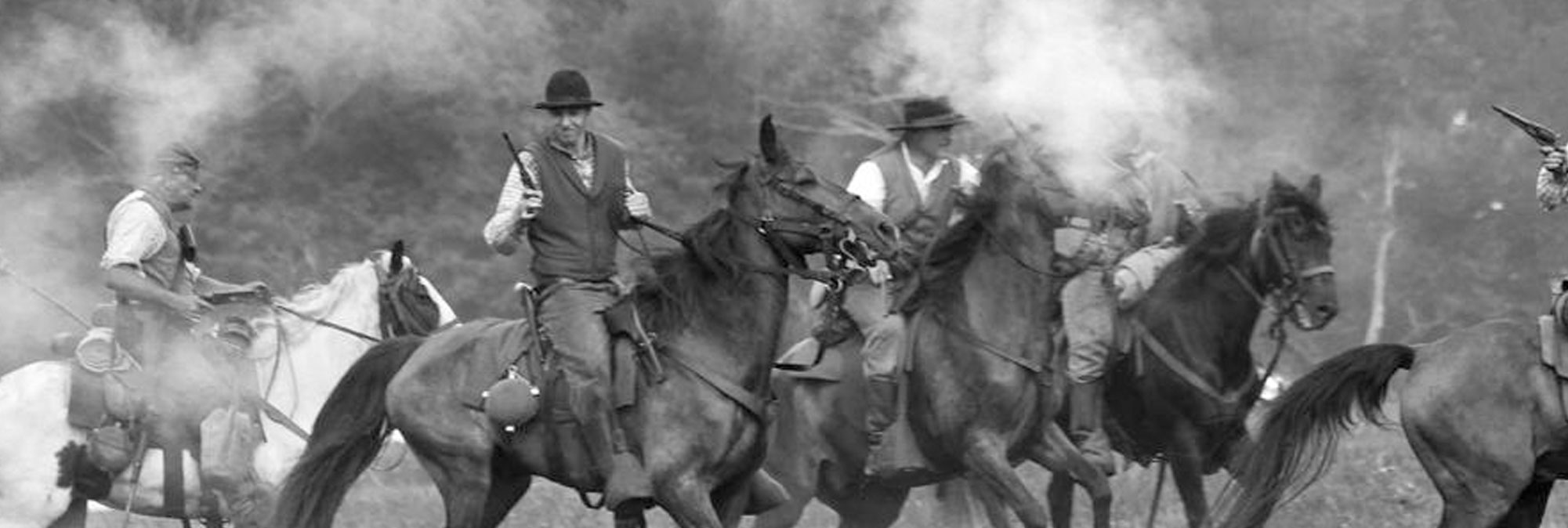
1865
By Lee Millar
Through January and most of February 1865, Germantown was again in No-Man’s Land. The M&C Railroad was completely abandoned, leaving the town cut off.
| February 26 | Three Union cavalry divisions swept into north Mississippi on a raid and returned by way of Germantown. The 7th Illinois Cavalry is one of the regiments that temporarily camp at the town. |
| March 3 | Another Union cavalry division concentrates at Germantown but must await more supplies by train before moving out. At 6 pm the next day they move toward Collierville and then turn south burning barns and crops, returning to Germantown on the 11th. |
| March 19-25v | Federal forces begin an earnest establishment of control over the railroad and several companies of the 12th Illinois Cavalry are deployed at White’s Station, Germantown, and Collierville. |
| March 28 |
The 12th Illinois is moved to Collierville and the 11th New York Cavalry occupies Germantown. General Washburn in Memphis, commander of the District of West Tennessee which includes the occupied territory of north Mississippi, increases the issuance of Oaths of Allegiance to area citizens to increase the business trades and restore the old community relations. A squad of Confederate cavalry attacks the pickets of the 11th New York, wounding two, one mortally. One Confederate was captured. |
| April 3 | A Union patrol from Collierville to Germantown of 30 men armed with rapid-fire breech-loading carbines is routed by a 60-man company of Confederates who are armed with single-shot Enfield rifles. The next day Union patrols are increased to 100 men. |
| April 9 | General R. E. Lee surrenders to his Army of Northern Virginia. The War for Southern Independence is almost at an end. |
| April 18 | Captain George W. Smith, 11th New York Cavalry based in Germantown, reported that a patrol moving toward Collierville was attacked and routed by Confederate cavalry (near Bray’s Station). This is the last recorded military action in the state of Tennessee. |
| May | By the end of this month, the war was over. Germantown’s Southern soldiers had to get home from Lee’s army in Virginia, Joseph Johnston’s Army of Tennessee in North Carolina, and Forrest’s Cavalry in Alabama. Likewise, those released from northern prisons made their way by steamboat, railroad, and on foot to get home. |
| September 30 | The federal occupation of Germantown ends. |
Aftermath
The returning soldiers or their widows set to work to restore their farms and businesses. Neglected fields, destroyed equipment and buildings, the loss of draft animals, and disrupted labor supplies made 1865 a year of minimal recovery and production. Nevertheless, commerce and subsistence agriculture struggled back to life in Germantown. The M&C Railroad had been reopened since May, with a daily train leaving Memphis for Grand Junction at 8 AM. The tenuous rail equipment and rail-line made this an 11-hour trip over this 50 miles. But repairs continued, and by November, one train a day traveled from Memphis to Stevenson, Ala. and the old connections to major southern and north-eastern cities were reestablished. Passengers, freight, and crops were once again moving into and out of Germantown.
Contributors to these articles on Germantown and the War Between the States:
Lee Millar
Sid Witherington
George Browder
